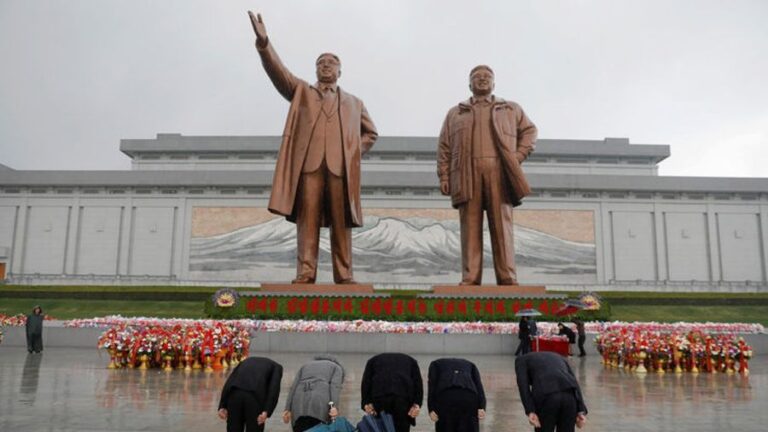Russia’s Endorsement of Central Asia-South Asia Connectivity Advances Multipolarity
Russian Foreign Minister Sergey Lavrov’s enthusiastic endorsement of Central Asia-South Asia connectivity shows that his country is on the verge of completing its envisioned Greater Eurasian Partnership for connecting the supercontinent.
Building the Greater Eurasian Partnership (GEP) is one of the top goals of Russian grand strategy. It envisions connecting the supercontinent through infrastructure projects and trade deals in order to accelerate the emerging Multipolar World Order. This end goal complements China’s own of establishing a community of common destiny for mankind, which will enhance strategic stability by making all countries – including rival pairs – stakeholders in one another’s success. Russian Foreign Minister Sergey Lavrov enthusiastically endorsed Central Asia-South Asia connectivity during last week’s topical conference in the Uzbek capital of Tashkent, which was a monumental moment for the GEP since it’ll complete the last piece of this geo-economic puzzle.
Some of that world-class diplomat’s words during his keynote speech deserve to be highlighted:
“The representative nature of this event is vivid proof of the increasing demand for a unification agenda in Eurasia and the rest of the world…We are regarding the issue of connectivity between Central and South Asia primarily through the prism of the integration processes that have picked up high dynamism throughout the Eurasian region. Russia has been consistently in favour of forming the Greater Eurasian Partnership, a congregative integration contour in the entire space from the Atlantic Ocean to the Pacific, one that is maximally free for the movement of goods, capital, the workforce and services and open, without exception, to all the countries of our common continent, Eurasia, and the integration unions created there, including the Eurasian Economic Union (EAEU), the Shanghai Cooperation Organisation (SCO), and the Association of Southeast Asian Nations.
…
Intensifying and expanding integration collaboration within the framework of the Eurasian Economic Union is an inalienable part of the process of emergence of the Greater Eurasian Partnership…In this broad context, higher connectivity between Central and South Asia is opening new vistas for the development of trade, economic and investment processes on the Eurasian continent. First, this implies an expansion of transport routes, particularly railways, between the two regions. This would become an important element in creating a seamless, united logistical space that would link the southern ports in Iran and India with northern cities in Russia and EU countries. Russian Railways, jointly with its partners, is ready to take part in making feasibility studies for relevant projects.
We have accepted with interest President of the Republic of Uzbekistan Shavkat Mirziyoyev’s proposal to align the Trans-Siberian Railway and the Europe-West China corridor with new regional projects. We are ready to discuss this initiative in detail. The idea to align the energy infrastructure of Central and South Asia is showing great promise. The EAEU is working to form a united electric power market. This process could be synchronised with power supply projects in Central and South Asia…At the same time, the further development of mutually beneficial ties between Central and South Asian states and their neighbours in the investment, infrastructure, humanitarian and other spheres will help to promote unification processes in Eurasia and also in a broader political context. Russia is interested in promoting this constructive agenda. I am confident that the results of this conference will contribute to this as well.”
As can be seen, advancing Russian-South Asian connectivity through Central Asia is now a priority for Moscow.
There had hitherto been two indirect means through which the Eurasian Great Power sought to reach this geostrategic region of the supercontinent. The most well-known is the North-South Transport Corridor (NSTC) through Azerbaijan, Iran, and over the Arabian Sea to India while the most recent one from 2019 is the Vladivostok-Chennai Maritime Corridor (VCMC) across the Sea of Japan, East China Sea, South China Sea, Strait of Malacca, Andaman Sea, and the Bay of Bengal. What Russia is now finally attempting to do is streamline transregional connectivity through Central Asia and post-withdrawal Afghanistan exactly as I proposed it should do in my policy paper from last year published by the prestigious Russian International Affairs Council (RIAC).
Titled “Pakistan’s Role In Russia’s Greater Eurasian Partnership”, I argued that if South Asia is the last regional piece in Russia’s GEP, then it naturally follows that the improvement of Russian-Pakistani relations is truly the key to completing this grand strategic vision since it’s about time that these two former rivals begin exploring a strategic partnership due to their shared security interests in Afghanistan and regional connectivity ones for connecting Central & South Asia. Furthermore, President Putin’s vision for an Arctic-Siberia-Indian Ocean corridor that he first unveiled during his speech at the Valdai Club’s October 2019 annual meeting perfectly complements Pakistan’s vision for expanding the China-Pakistan Economic Corridor northward (N-CPEC+).
Some recent developments added significant substance to these complementary visions. The first was the agreement in February between Pakistan, Afghanistan, and Uzbekistan to create a trilateral railway between them (PAKAFUZ). A month later, Uzbekistan announced the transregional connectivity conference that it finally hosted last week. This was followed shortly after by Pakistan unveiling its new grand strategy of geo-economics. Foreign Minister Lavrov then visited Pakistan for the first time in nine years in early April, during which month the US announced is plans to fully withdraw from Afghanistan. Finally, last month’s virtual meeting between the top Chinese, Pakistani, and Afghan diplomats saw Kabul commit to relying on CPEC’s terminal port of Gwadar.
It’s unlikely that Russia was surprised by any of these fast-moving developments, which is why it was able to adapt to them so smoothly as was just seen last week. After all, my June 2020 RIAC policy paper proposed the trans-Afghan connectivity model through which Central & South Asian integration could proceed (now described as PAKAFUZ instead of N-CPEC+), which in turn would advance Russian-Pakistani integration and thus complete the GEP. Foreign Minister Lavrov is RIAC’s Chairman of the Board of Trustees so it’s entirely possible that either he or much more likely those below him studied my work over the past year and incorporated some of my proposals into their country’s relevant policy formulations.
Regardless of however Russia can to realize that its grand strategic goals in Eurasia can only be accomplished by strengthening connectivity with Pakistan via Afghanistan, the most salient point is that it ultimately reached this conclusion and is nowadays actively working to advance the associated modalities. This includes not only infrastructural cooperation, but political coordination on the Afghan peace process in order to stabilize that irreplaceable transit state and thus enhance the viability of its South Asian-directed GEP vision. Major geo-economic changes are presently afoot in the Eurasian Heartland, and their outcome will directly shape the future of the emerging Multipolar World Order.








One Comment
Comments are closed.